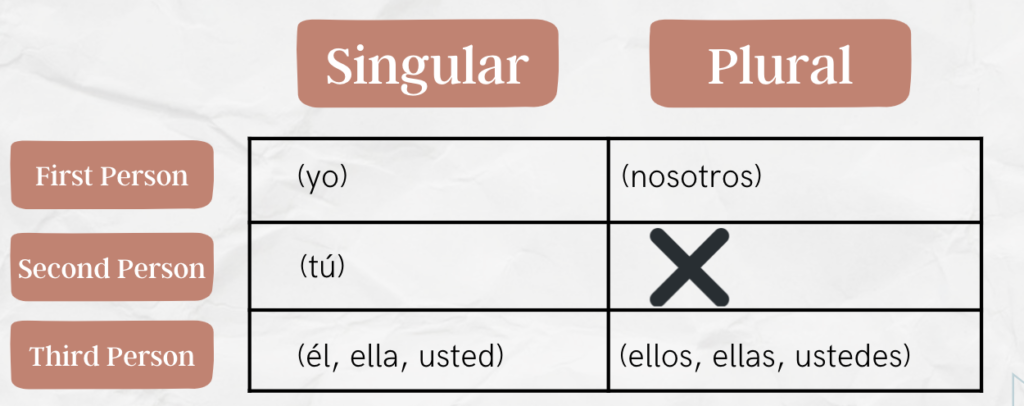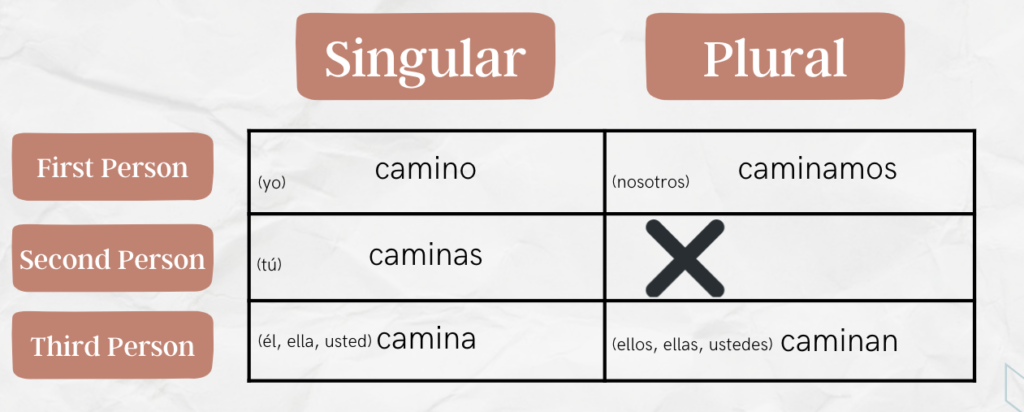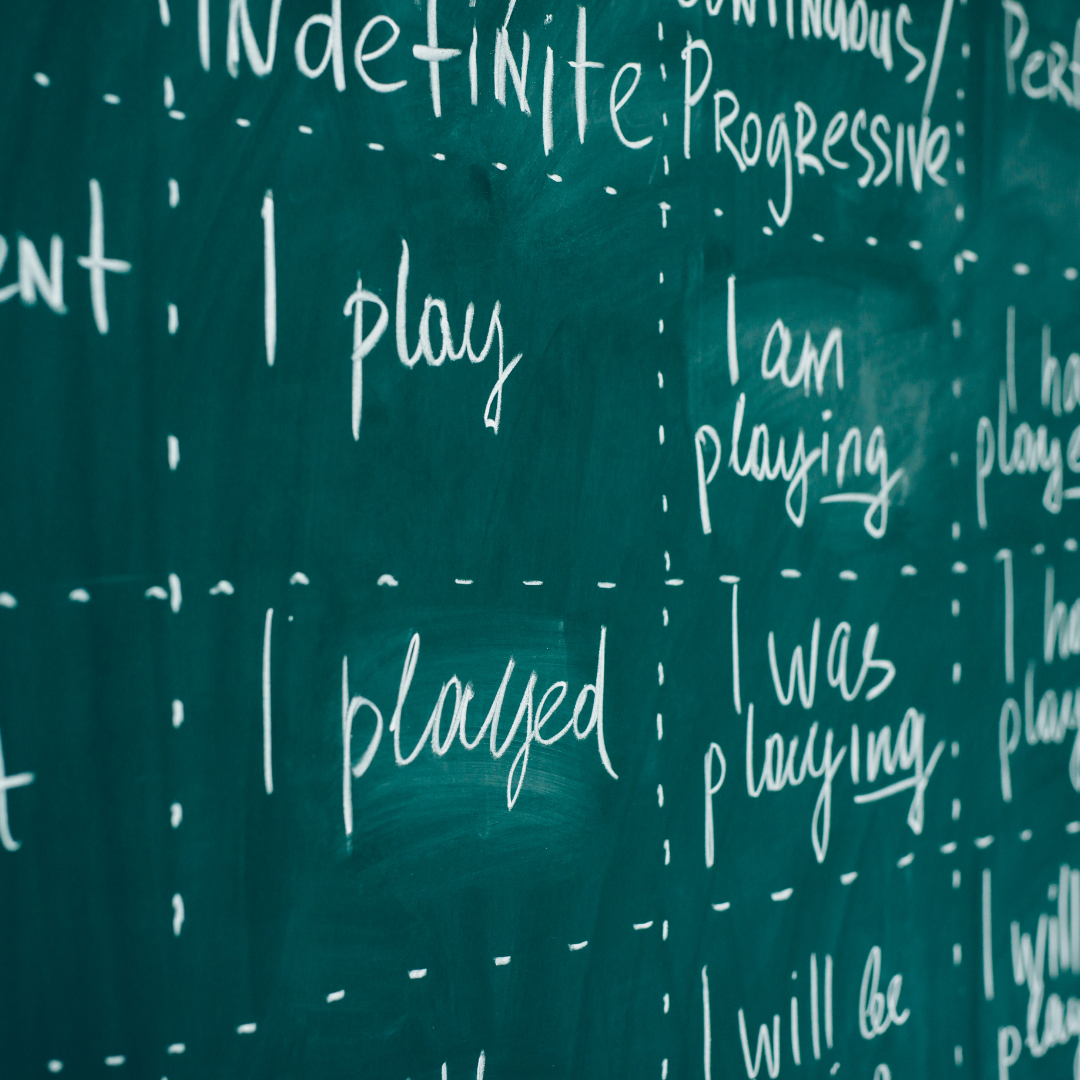Question. The word “conjugation”…how does it make you feel?? If you’re like most Spanish learners, that word can be quite intimidating. It is intimidating because most see it as a foreign concept. We forget that we actually conjugate everyday in English as well; it’s just that we learned how to do that so long ago that now it comes naturally to us. Conjugation in simple terms is the way that we change a verb based on who is doing the action of the verb. Conjugation is why we say “he does” instead of “he do.” Or “I am” instead of “I are.”
My goal with this post is to help de-mystify Spanish conjugation for you. As one of the most foundational grammar concepts, conjugation is easier to tackle when you have the right approach. So, here are 3 approaches to tackling Spanish verb conjugation that I hope help.
Visualize Conjugation
The first approach is to visualize conjugation. Instead of just learning the pattern of conjugated endings, visualize who each conjugated verb is talking about. A great way to start doing this is to use the template below. I have included an example of how to use the template with a present tense verb as well.


Of course, this template can be used with any tense. The goal of this template is to help you visualize conjugation by identifying who each conjugated verb is referring to. It is also easy to see how English conjugation lines up with this model as well, which helps Spanish conjugation make more sense!
Repetition is Key
Okay, so let’s move on to approach number two. When tackling Spanish verb conjugation, verbal repetition is going to be a game-changer. When it comes to this approach, it’s as easy as taking a few minutes a day to simply repeat the conjugations of a few verbs 5-10 times. This will literally make the conjugation stick in your brain. You may even get to the point where you are repeating conjugations in your sleep! When I was learning Spanish in Oaxaca, Mexico, our teachers called this time in our daily schedule “patrones.” And, let me tell you, even though “patrones” felt like rote repetition, that dedicated time made learning conjugation so much easier.
Listen, Please!
Last, but not least, we’ve made it to approach number three. Approach number three is all about listening. When familiarizing yourself with conjugation, hearing conjugated verbs used in practical ways can be so helpful. Listening can come in all forms. Listen to a Spanish podcast (we recommend How To Spanish or Spanish & Go). Listen to an audiobook in Spanish. Watch a movie in Spanish. It doesn’t matter what you listen to. What’s important is that you are listening for the conjugated verbs and paying attention to the context. We highly recommend that the speaking is at a pace that you feel comfortable with. Take it a step further by writing down the verbs that you hear, ensuring that you know who the subject of the verb is, and then reading them later (look up their translations if necessary).
Conclusion
Okay, so there you have it! But, we can’t end this post without telling you that the number one way to improve your conjugation skills are by practicing with someone (preferably a native speaker)! As a Spanish learner, you cannot get away from conjugation. So, why not have fun with it? Let us know which of these approaches you try and which helps you most. We’d love to hear it!
For more, subscribe here.
Interested in joining our 5-day challenge to jumpstart your Spanish? Click here.



